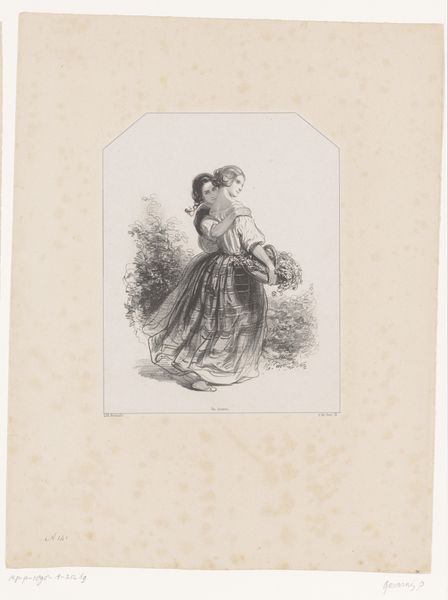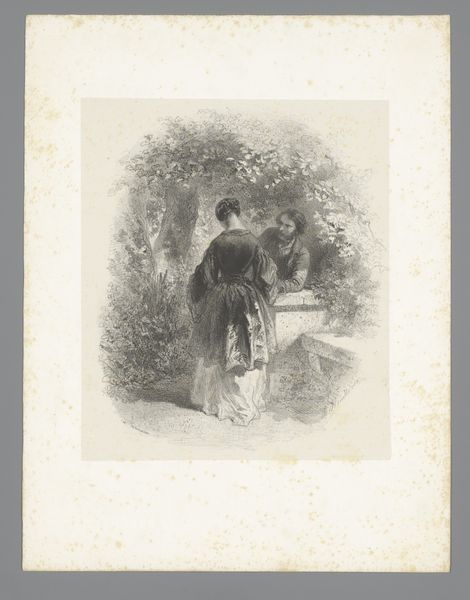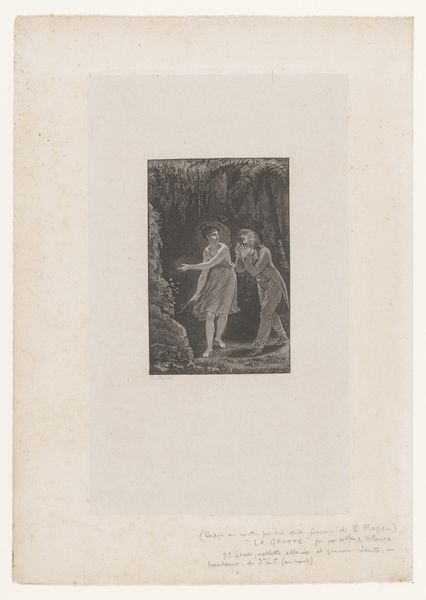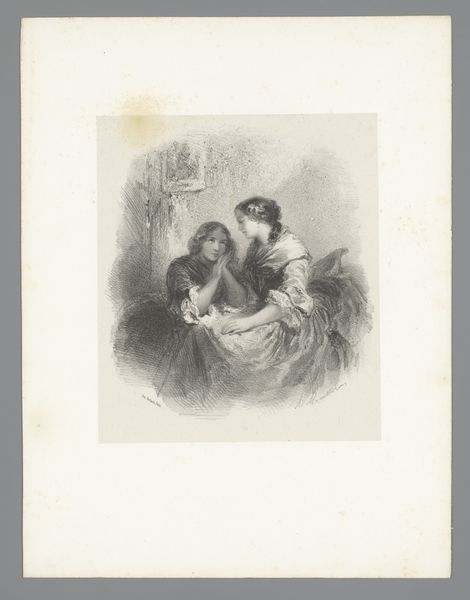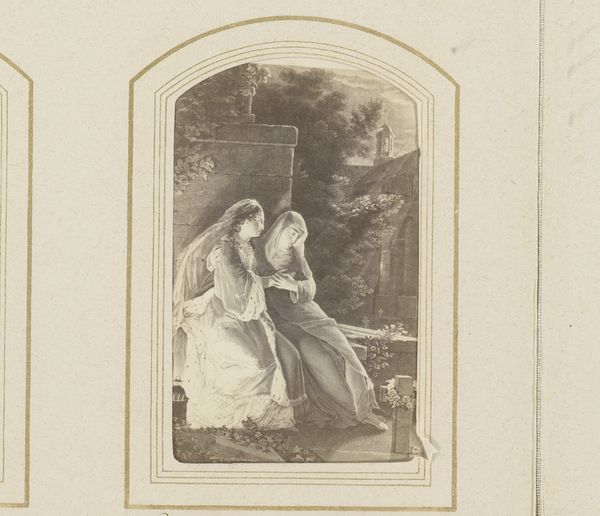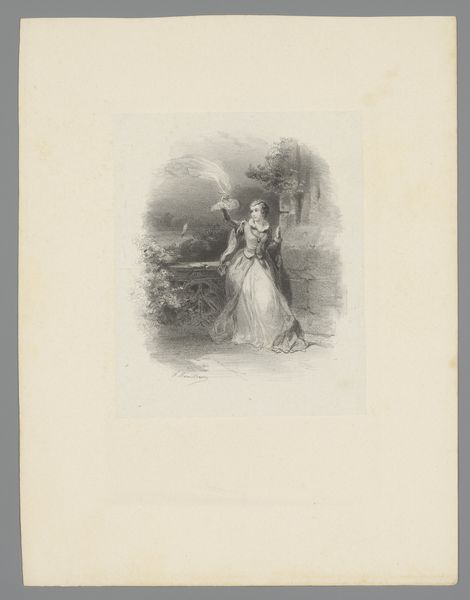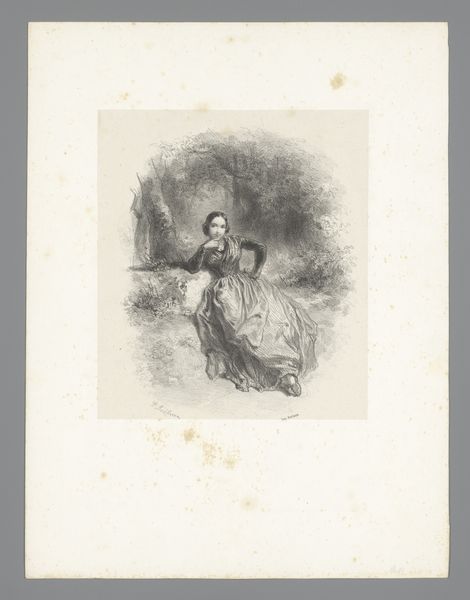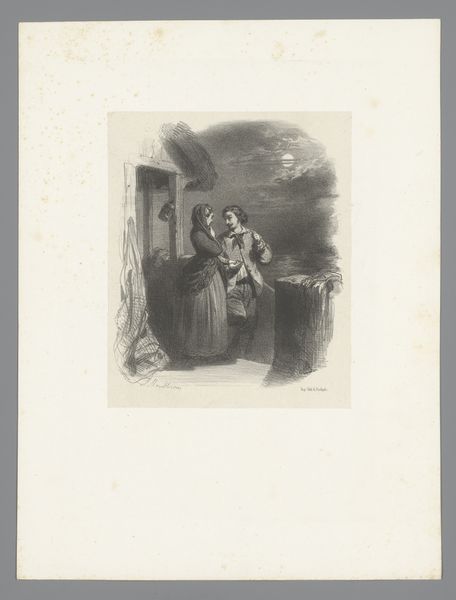
Dimensions: height 127 mm, width 97 mm
Copyright: Rijks Museum: Open Domain
Editor: This drawing, "Zoenend paar deels achter een struik" – or "Kissing couple partly behind a bush"– made between 1852 and 1890 by Willem Linnig II, using ink on paper, is so delicate. It's at the Rijksmuseum. I find myself drawn to its romantic, almost secretive, mood. What stands out to you when you look at this piece? Curator: As a materialist, I'm fascinated by the artist's choice of ink and paper during that period. Romanticism often idealized nature, but here, the very act of drawing with ink – a readily available and relatively inexpensive material – and paper raises interesting questions. Was Linnig making art accessible through the democratization of materials, moving away from the elite associations of oil painting, perhaps commenting on the societal changes related to labor and leisure? Editor: That’s a compelling idea. I hadn’t considered the social implications of his chosen materials. So, you see the use of ink and paper as potentially a statement about accessibility in art consumption? Curator: Precisely. The use of paper also points to mass production techniques. Consider the role that the rise of printmaking played in disseminating romantic imagery and narratives. In that light, how does the intimacy of the scene—the "kissing couple"—play into a broader network of reproduced imagery? Editor: That gives me so much to think about! It makes me consider how even seemingly simple material choices contribute to the work's overall cultural significance. Curator: Exactly. We’ve unpacked how the materials chosen and the artistic process are intrinsically linked to both the romantic style and social context of the artwork's creation. It makes the scene so much more intricate. Editor: I will never see another ink drawing the same way. Thank you!
Comments
No comments
Be the first to comment and join the conversation on the ultimate creative platform.
